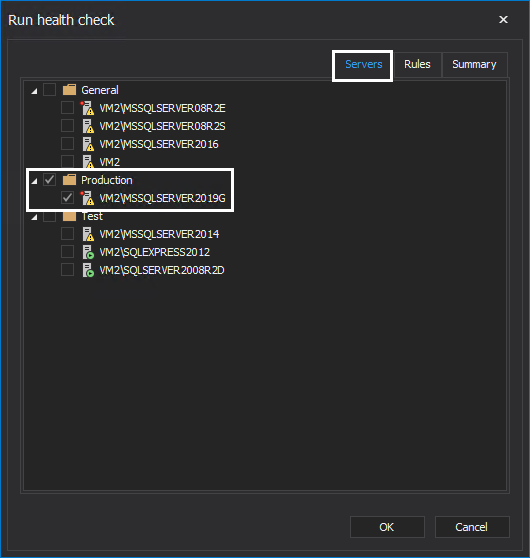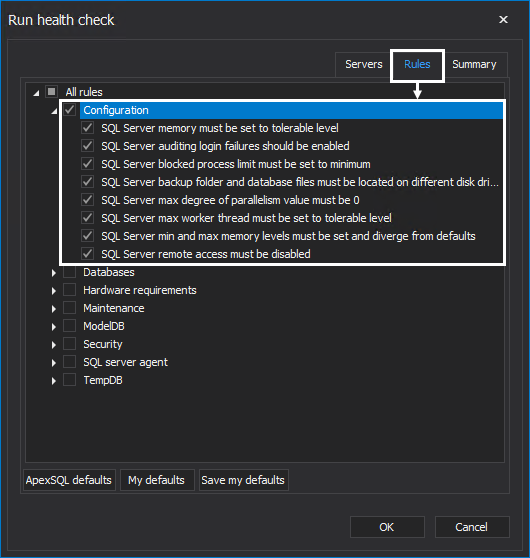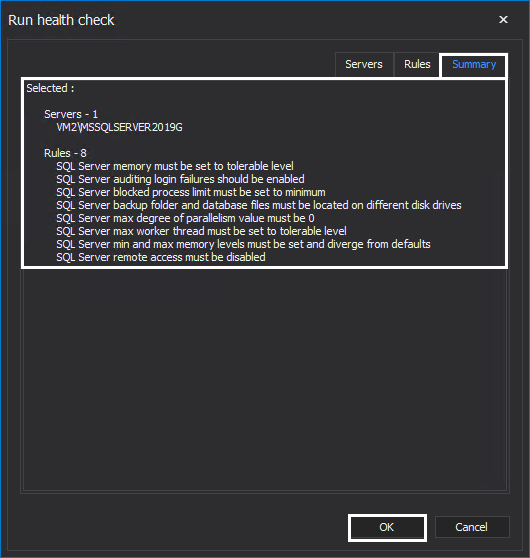This article describes how to run a health check analysis of SQL Server instance configuration in SQL manage instance tool.
Fine-tuning the performance and configuration of SQL Server instances is a broad topic and the best results are usually determined based on the user environment. To avoid time-consuming troubleshooting there are specific best practices which can eliminate numerous hours of fine-tuning. ApexSQL Manage provides the means to spot the troublesome areas by performing a fast configuration diagnostics and best practices for enforcement.
To run a configuration check, go to the Health tab and click the Run button.

Run health check window is comprised of three tabs:
By default, the first tab is Servers. Check SQL instances for the health check, and proceed to the next tab:

For the discovery of new SQL Server instances in ApexSQL Manage, refer to the article How to discover SQL Server instances, SSRS, SSAS and SSIS services across the network
Rules for the health check can be specified in the Rules tab. This selection can be done individually i.e. per rule or by category. For this article, rules from the Configuration category will be checked:

For this example, the following rules will be executed:
The Summary tab is used to inspect the final selection of rules before the health check has been run.
Click OK to execute the configuration health check:

The Results summary window is shown after every health check. In this window, the results have been composed to provide a graphical representation of the SQL Server health state:
Based on the type of rule and the resulting outcome, FixSQL can be used to fix the detected issue.
Check the failed rule and click on the FixSQL button to inspect the script:
Provided SQL script can be modified to suit the needs of the user environment and saved for future reference.
Click on the Execute button to run the script and resolve the issue: